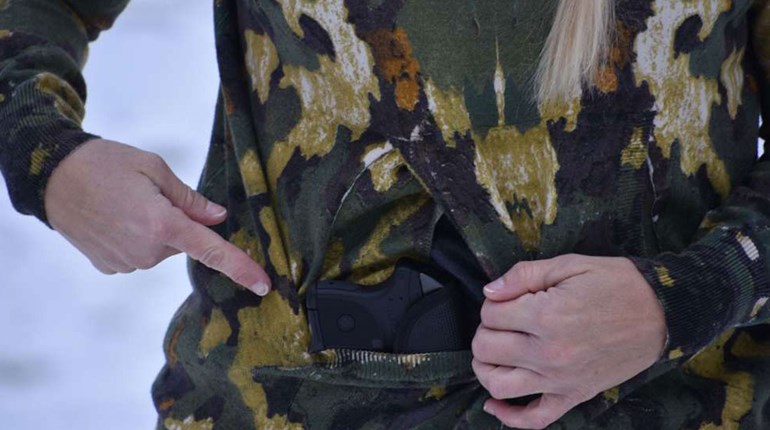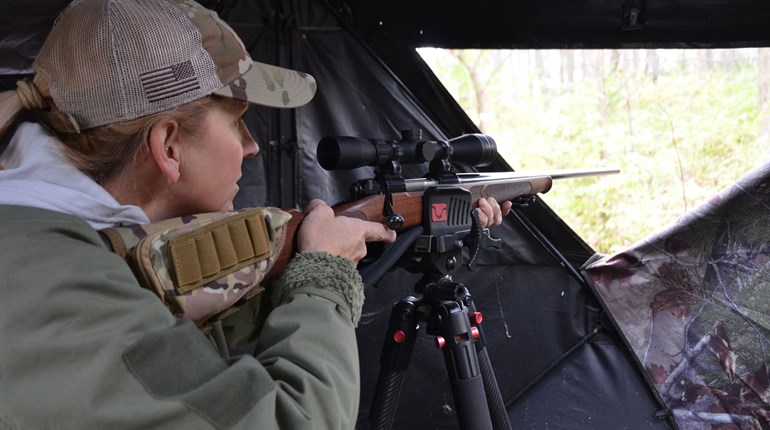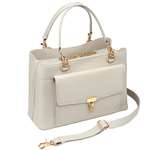
Whatever type of firearm you own, whether it’s for home defense, competition or just for plinking and recreation, you are going to need a method of aiming said firearm. Aiming solutions can be anything from simple sights, to high-end optics (such as a rifle scope with a reticle), or even a battery-powered red dot. Here are a few different options along with pros and cons of each.
Iron Sights
Iron sights are the most basic form of aiming solution on a firearm, and are usually the default method of aiming.
Pros:
—No glass to break
—No fogging or clouding of lenses
Modern styles come in a variety of configurations, some with colored fiber optics, some with tritium to assist in low-light settings. Many aftermarket options are available to personalize your experience.
Cons:
—They can be more difficult for a new person to quickly gain skill with.
—They can require a new shooter to divert effort to aiming that takes up their time and attention.
—They can be difficult to use in the dark

Red Dot
A red dot is a great aiming solution for targets that are close to mid distance. A red dot is generally made of a metal shroud with a glass lens inside, and some sort of reflexive or reflective red dot used as an aiming point.
Pros:
—Red-dot sights don’t require a lot of training to gain skill; you simply center the dot in the “window” and place it on the target.
—They are fast to acquire a target because you can see the target as well as the dot. In other words, you are not covering up the target with your sights, and it takes less time to have visual confirmation that you are on target
—Red dots can be mounted on rifles, pistols and shotguns.
—A red dot is going to generally be installed in the same place on the firearm no matter the user size or body type.
Cons:
—They can get fogged or scratched
—The dot can be difficult to find for someone who is not accustomed to using that particular firearm.
—Sunlight or bright light in the viewing window can make it difficult to find the dot.
—In the rain, depending on how much the shroud covers the glass of the red dot, water can cause a shooter to see multiple dots.
—The batteries and connections within the red dot can fail.
So compared to iron sights or a traditional scope with a reticle, red dots have more potential for failure.
A Scope or Variable Powered Optic
A traditional rifle scope can be versatile. With a variable power or zoom, it makes acquiring a variety of targets at different distances more achievable. What you tend to see in “real life” would be considered “1 power.” Rifle optics can go all the way out to 24x or further for very long distance use. For example, a 1-8x powered optic would be useful from up close to several hundred yards. Depending on your skill, a 1-8x optic would cover your needs from approximately 10 yards to 500 yards. For long-distance shooting or hunting (200 to 1,000 yards) a 3-24x would be a better fit.
The new name frequently applied to a scope is an LPVO or Low Powered Variable Optic.
Pros:
—For targets that are further away, or if you want to use your firearm for near, mid-range and far, a variable powered optic is preferable.
—Available options of brands, models and magnification are plentiful.
—A variable-power optic allows you to go from near to far without changing your aiming solution.
—They are offered with illuminated and non-illuminated reticles in different shapes and configurations. (Often people discuss the design of the reticle by referring to the subtentions—the parts you see in the reticle, and what size or distance each of them measures.)
Cons:
—A rifle scope tends to be heavier than a red dot or iron sights. Add the weight of the mount and you might be adding 1 to 2 pounds to the firearm.
—If your targets are very close, like you might assume you would face in a home-defense scenario, a scope or LPVO can be a hindrance to fast target acquisition.
—It can take some time to learn the optic and reticle, and how that the holdovers and features within the reticle work with the ammunition that you have
—Variable powered optics should be mounted for the person using the firearm. So depending on who uses the rifle, a variable powered optic requires a little more attention to setting it up and installing it on the firearm to obtain proper eye relief.
Aiming for Success
No matter what aiming solution is on your firearm, learning to use it is the most important part! So after you decide what you want and get it installed, head to the range and get to work.















































